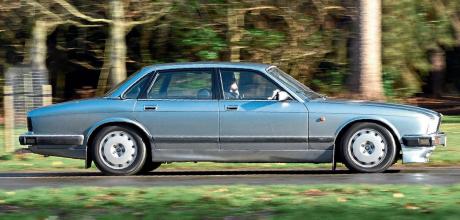1992 Jaguar XJR XJ40
The first saloon car to bear the XJR name might not have been supercharged, but that doesn’t stop it being a true sports saloon.
WORDS SAM SKELTON
PHOTOGRAPHY PAUL WALTON
Revisiting the first Jaguar to wear the XJR badge: the early TWR-developed XJ40.
To say the company was known for its sports saloons, Jaguar by the 1980s had settled into making cars that were targeted more toward the fat cat than the cool cat. The XJ6 had become rather more golf club than squash club, and the XJ-S – while it retained some sporting image – appealed to exactly the same buyers as theE-Type had. Not the same social type, but the very same people, 20 years on and comfortably into late middle age.
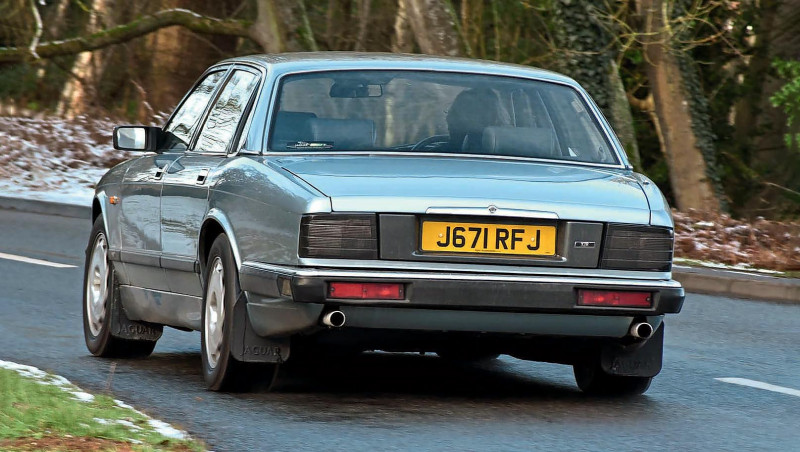
But Tom Walkinshaw felt that Jaguar could regain the image it had had. Described by Jaguar’s former chair Sir John Egan in his 2015 autobiography Saving Jaguar as ”part tornado, part rugby front-row forward and part mystical leprechaun”, Walkinshaw had been competing in the BTCC since 1974 when he won his class in a Ford-supplied Capri.
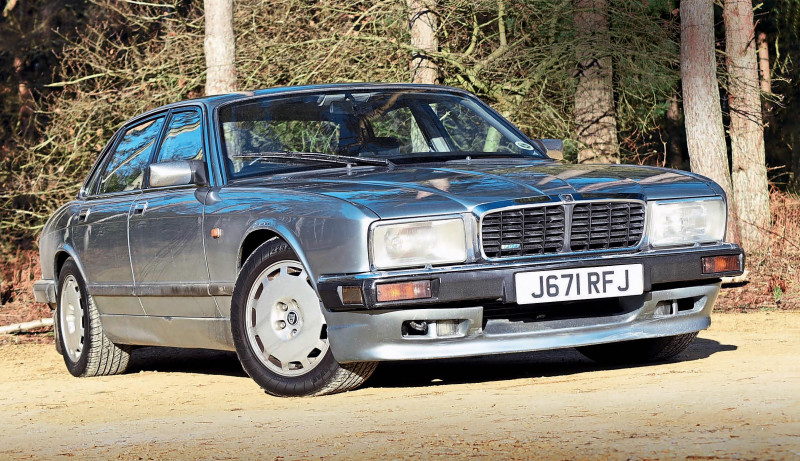
In 1981, he approached Jaguar with a proposition – he could win the European Touring Car Championship in an XJ-S if they would sponsor the project. By 1982 he took a win and the sponsorships increased – by 1984 that had become victory in the driver’s championship. Tom Walkinshaw would also help Jaguar win the World Sports Car Championship in 1987, 1988 and 1991.
But in 1984 he had begun to capitalise on his racing victories by offering upgrades for Jaguar road cars, sold under the TWR JaguarSport brand. Bigger wheels, blueprinted engines, better exhausts, suspension and steering tweaks sharpened up the XJ-S and TWR expanded into providing similar options for the Series 3 and subsequent XJ40 saloons. Sales were through just 14 approved Jaguar dealers, and the TWR additions were priced separately.
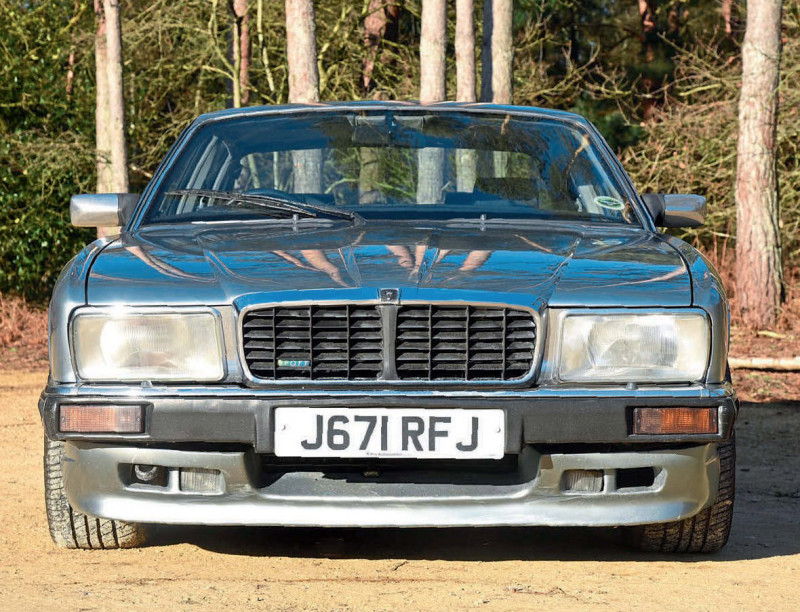
By 1988 Jaguar had realised there could be a real market for this type of upgrade, and a subsidiary company called JaguarSport Ltd was set up at a cost of £5million as a 50/50 joint venture between TWR and Jaguar, with Sir John Egan as Chairman and Tom Walkinshaw in overall charge as Managing Director.
“The principal aim,” said Walkinshaw in Autocar’s 18 May 1988 issue, “will be to produce limited volumes of uniquely styled, high performance cars, which will help broaden the marque’s appeal to customers who require their Jaguars to have more overt sporting characteristics. Eventually we aim to sell worldwide and have a capacity of around 2500 JaguarSport cars each year.” John Egan supported this, as “a logical development of our highly successful motorsport relationship. It will enable us to apply the experience we have gained on the world’s racing circuits to develop Jaguars aimed at the more specialised requirements of the enthusiast.” As before, cars would be shipped from Jaguar’s Browns Lane base to TWR in Bloxham, Oxfordshire and would be converted into roadgoing sports specials. Thus were the official JaguarSport XJR-S and JaguarSport XJR models born.
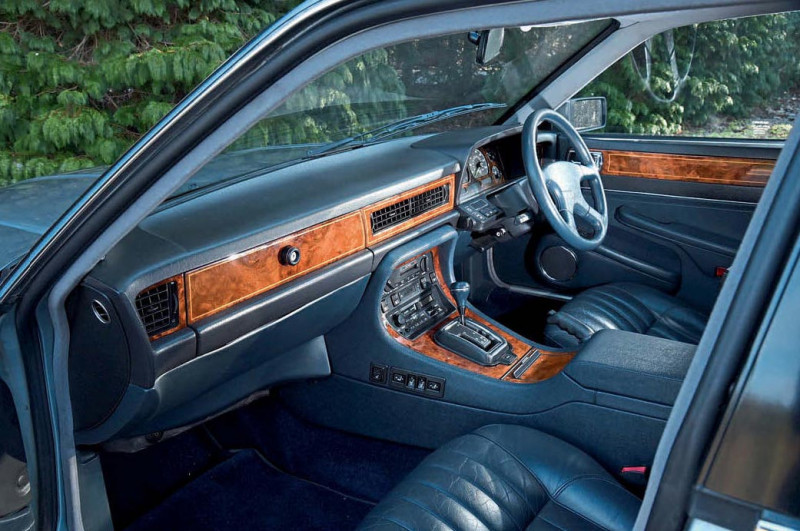
Launched at the 1988 Birmingham Motor Show at an initial cost of £38,500, the XJR was based on the £22,200 XJ40 3.6.
While TWR would sell you a bodykit for your 2.9, this was a different kettle of fish. Where the earlier cars were effectively conversions and could add over £10,000 to the cost of your chosen donor, the XJR was effectively an in-house product available through Jaguar dealers – with its own VIN identifier and a standard specification.
XJR 3.6s were all based upon the XJ6 specification as standard, though fitted with the fully chromed door frames of the Sovereign. The body was enhanced with two revised bumper covers incorporating colour coding and valances, while there was also a subtle spoiler on the bootlid. Inside, there was wood taken from the Sovereign model complete with inlay and door cards borrowed from the range-topping Daimler models. The seats came with stiffer bolsters and a thicker, four-spoke steering wheel was finished in the same shade as the seats.
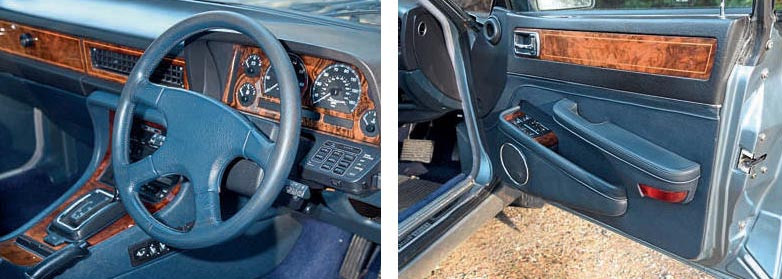
Underneath, they came with Pirelli 225/55/16 tyres fitted to big Speedline alloys, along with re-valved steering racks, uprated shock absorbers and anti-roll bars. At this point, no performance upgrades were made to the engine, the XJR 3.6 being predominantly a cosmetic and handling exercise. Just four colour combinations were available from launch – Solent Blue, Arctic Blue and Alpine Green with Magnolia leather, or Tungsten Grey with Doeskin leather.
These cars were short-lived, since the 4.0 engine replaced the 3.6 in the XJ40 range amid a large shakeup in the range which incorporated a new analogue dashboard and other minor improvements.
Early XJR 4.0 cars were cosmetically the same as the 3.6 which came before, with the exception of a wider colour palette borrowed from the main range. They also shared the same tweaks under the skin – but the 4.0 had a trump card. It offered engine upgrades – courtesy of the aborted XJ41 development program.
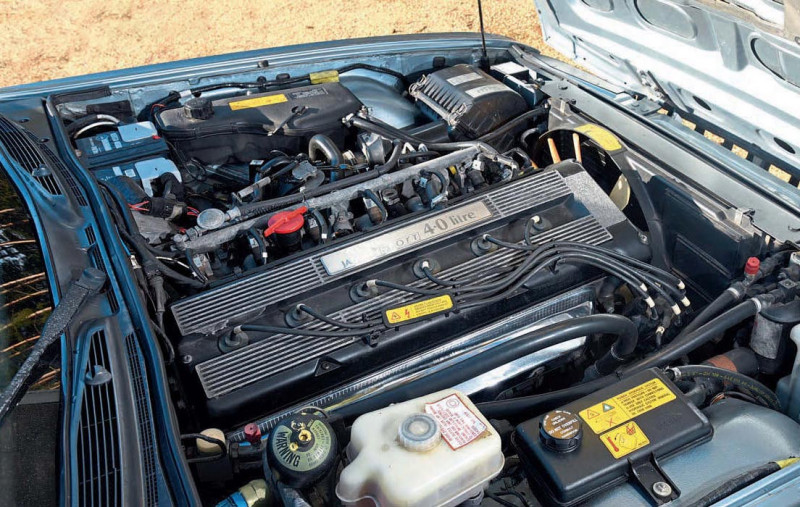
“There’s an interesting little historical quirk with the Tom Walkinshaw cars as far as this story goes,” says former Jaguar technical engineer Martin Joyce. “The first 3.6-litre XJRs had no engine upgrades, but the TWR XJR 4.0 did have some engine work at the top end. The thinking behind these modifications was basically taken from the knowledge we gained from the XJ41 naturally-aspirated engine. I was sent to TWR for the day to outline what we did, and my work was used for the XJR. That’s not to say that 4.0 XJRs used an XJ41 specification engine. The engine is still 98% an XJ40 engine, but the things TWR changed are based on what we learned from the XJ41 to gain more power. We actually liberated more with XJ41, but we had a freer intake and exhaust setup than the XJ40 could use.”In truth, the XJR 4.0 offered 248bhp against the standard car’s 223bhp, though torque remained unchanged at 278lb. ft. The increase was courtesy of a new inlet manifold, revisions to the engine management and high-lift camshafts. Further changes would come for the 1992 model year in 1991 with an extensive facelift. The quad headlamps were replaced by Sovereign-spec halogen units, the grille was replaced with a new plastic insert evoking early XJs with horizontal and vertical slats, an infill panel was fitted to the bootlid around the number plate, the bumpers and valances were redesigned and new side skirts were fitted.

The wheel design was changed, though it remained the same size. Window frames were now powder coated, though waist rails and gutters remained chrome as per the XJ6. This would be the final iteration of change for the model and while a new XJR was planned for the later X300 series, separate disputes with Tom Walkinshaw meant that Jaguar would develop its next performance XJ in-house. That car, the X300 XJR, would use a supercharged version of the XJ16 engine, development for which had begun around the time of JaguarSport’s inception in 1988.
But was the XJ40-based XJR any good? The only way to judge the car is to test one – and we went looking for a suitable car to assess. We found this 1992 example at Anglia Car Auctions, just ahead of its 28 January sale and finished in Diamond Blue with Isis Blue leather, it looks the part. One of the facelifted later 4.0 models with the revised wheels as launched in 1991, it shows just 77,000 miles from new. Specified with a CD changer, cruise control, remote locking, air conditioning and a sunroof, this car would have cost £44,200 when new against a standard list price of £40,769.23.
For comparison, a standard 4.0 XJ6 would have been yours for just £27,740 and a Sovereign for £35,769.
There are two visual styles for the XJ40 XJR depending upon the era of production – and while many prefer the somewhat brash bodykits of the earlier cars for their red brace appeal, it has to be said that the understated looks of the later model are if anything more appealing than the standard car. The cross-hatch grille offers echoes of Series 1 and 2 XJs, aided by the bootlid infill panel giving the rear a somewhat flatter look. That it matches the grey-tinted Daimler rear lights is a pleasant bonus. The skirtings are more subtle, the wheels flatter and the black trimmings around the window frames in place of earlier chrome give the car a lower, sleeker image. It looks like a factory job rather than a bodykit.
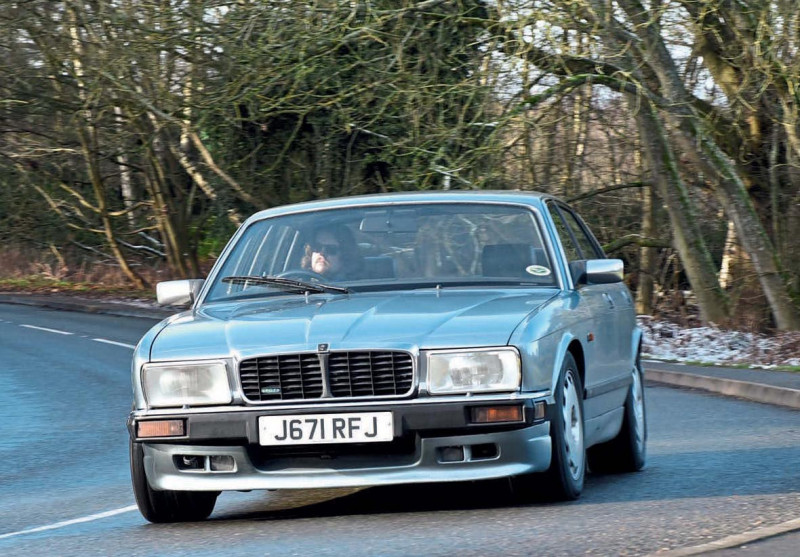
Inside, it’s more of the same – soft dark blue leather, an unusually thick steering wheel, and trimmings borrowed from Sovereign and Daimler models. The dashboard dials bear JaguarSport branding, the wood is lifted from the Sovereign, butthe door cards themselves are those used in Daimler models with the shorter but wider door pull and door bin. The seats use a better grade of leather than standard models, along with stiffer bolstering and contrast piping. Even by Jaguar standards the car feels like something special even before you turn the key.
At first, it doesn’t feel that special when compared with a standard XJ40 – it sounds broadly like an AJ6, and putting the shifter into D feels no different either. But then you go to pull away, and feel the resistance in the steering – it’s nothing like as light as the average Sovereign or XJ6 and has a bit of heft to it. It’s tauter without being cumbersome and I like it. Arguably less successful on British roads are the suspension changes, which can feel almost fidgety on the wrong surface given the firmness of those Bilstein shock absorbers. But then again, Jaguar wasn’t targeting the Sovereign driver with this car, and it takes a little mental readjustment to understand that when viewed alongside an equivalent BMW, the ride is still very good.
So far, so good then – it feels like an XJ6, only a little bit tighter. Throw it into a corner and it’s flatter than a standard car, without being overly compromising in its ride. But it’s when you put your foot down that you really feel the difference – it wakes up more quickly than any standard XJ40 I’ve driven and the sound is slightly more raw under full throttle than a normal XJ6, cultured and yet gruff, an engine that signifies intent without necessarily shouting about it. In short, this is a sports saloon for gentlemen.
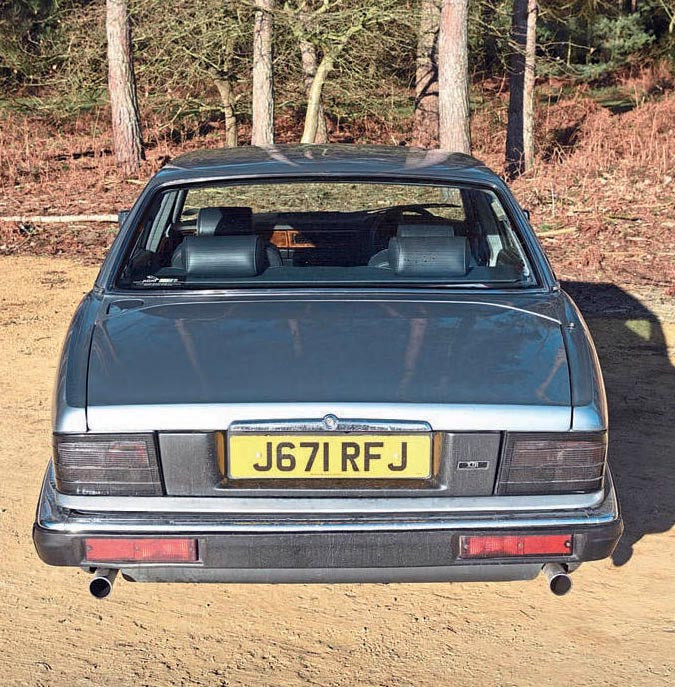
And what else was there in 1992 that could offer the would-be XJR buyer a similar package? The Audi V8 was similar money, but a softer proposition. BMW would sell you the 3.8 litre M5 E34 for £45,050 – almost five grand more than a standard XJR, though a 535i Sport would be £8000 less than the Jag. Jaguar itself would sell you the Sovereign V12 for similar money, but this far softer car with its four-speed automatic box and 1960s underpinnings was scarcely a competitor to the XJR’s leaner-edged aggression. A Mercedes-Benz 500E W124 would set you back £56,000 – money that would have bought not only the XJR but a 190E 1.8 W201 as a spare – while the Lotus Carlton’s £49,995 seemed tempting for the power but was still 25% more than the Jaguar.
The closest competition came in the form of Maserati’s 430; the four-door saloon based upon the Biturbo that would have set its first owner back by £40,793. In today’s market the Maserati is also the closest competitor, though the great value of later XJRs means that they would make tempting alternatives too.
These cars occupy a very special place in Jaguar history – not so much a “what might have been” but an alternative direction that could have brought the brand different fortunes. And given that more modern Jaguars seem to have sacrificed the traditional and soft image in favour of a return to sporting dynamics, you have to wonder just what might have become of the company had they adopted the JaguarSport philosophy back in the late 1980s.
The XJR proves that the existing models could have been targeted at a more youthful market, even if the involvement of TWR and the specification on offer meant that it came at a price.
BUY ONE
Thanks to owner Steve Hanks for the loan of the XJR. The car is still for sale and Steve is asking £10,000. More details on 07976 838071.
Four-spoke wheel is pure ’80s. XJR used Daimler-style door trims.
TECHNICAL DATA 1992 Jaguar XJR XJ40
- Engine 3980cc 6-cyl
- Max Power 248bhp
- Max Torque 278lb ft
- Max speed 145mph
- Acceleration 0-60mph 7.2 secs
- Transmission 4-spd automatic
- Economy 22.5mpg
- Price new £44,200 as tested
- Value now £15,995
Suspension changes make the car feel very different from the regular Xj6. Wheels were by Speedline.


